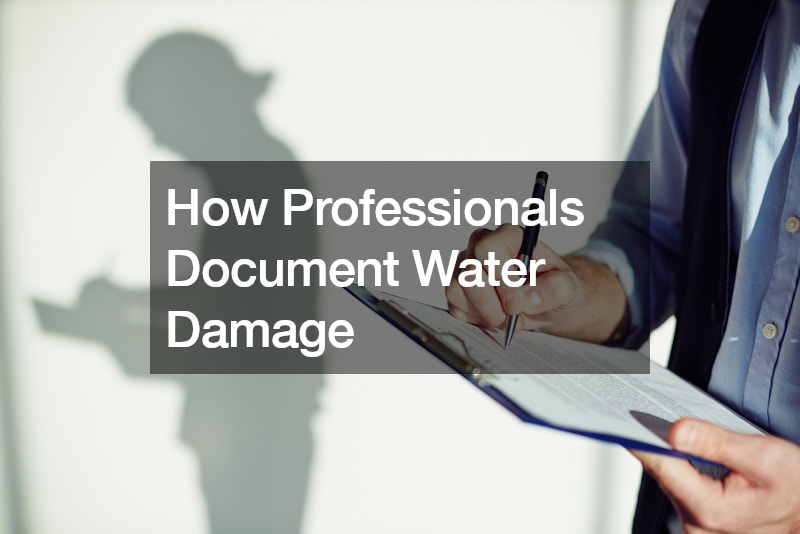
Water damage is a common issue that homeowners face, often requiring the assistance of professional water damage restoration services. When dealing with water damage, it’s crucial to document the extent of the damage thoroughly. Proper documentation not only helps in assessing the situation accurately but also plays a significant role in insurance claims and restoration efforts.
Why You Need to Document Water Damage
Documentation of water damage is crucial for several reasons:
- Assessment Accuracy: Proper documentation allows for an accurate assessment of the extent and severity of the damage. By documenting details such as the cause of the damage, affected areas, and moisture levels, professionals can develop comprehensive restoration plans tailored to the specific needs of the property.
- Insurance Claims: Detailed documentation serves as evidence for insurance claims. Insurance companies require thorough documentation to process claims efficiently and determine the appropriate coverage for the damage. Proper documentation increases the likelihood of insurance claims being approved and ensures fair compensation for homeowners.
- Legal Compliance: Compliance with regulatory requirements is essential in the restoration industry. Proper documentation ensures that restoration efforts adhere to legal standards and regulations governing water damage mitigation and restoration. Failure to document water damage adequately can result in legal liabilities and penalties.
- Restoration Planning: Comprehensive documentation provides restoration professionals with valuable information to plan and execute restoration efforts effectively. By documenting the scope of the damage, moisture levels, and other relevant details, professionals can develop tailored restoration strategies that address the specific needs of the property.
- Communication and Collaboration: Documentation facilitates communication and collaboration among restoration team members, homeowners, and insurance adjusters. Clear and detailed documentation ensures that all parties involved have a shared understanding of the damage and the proposed restoration plan, promoting effective collaboration and decision-making.
How to Get Started
One of the key aspects of documenting water damage is creating detailed reports. Professionals utilize various tools and methods to ensure comprehensive documentation. One such tool is digital floor plan apps like Magicplan. These apps allow restoration experts to craft detailed floor plans using mobile devices, streamlining the process and integrating seamlessly with estimating tools like Xactimate.
The process begins with capturing essential project details. Professionals input information such as the property type, age, and address into the digital platform. This step ensures that all pertinent information is recorded accurately for future reference. Additionally, assigning the authorship of the project ensures accountability and organization within the documentation process.
After establishing the project details, professionals fill out project-level forms tailored to water damage assessments. These forms cover crucial aspects such as the cause of the damage, classification of the damage, and any recent repairs or renovations in the affected area. Photos play a vital role in this stage, providing visual evidence of the damage. Restoration experts can easily add photos directly from their mobile devices, capturing the extent of the damage effectively.
Moreover, annotations on floor plans enhance the quality of assessments by providing context to the damage. By adding notes and annotations to specific areas of the floor plan, professionals can accurately depict the scope of the damage and its location within the property. This level of detail ensures that all parties involved have a clear understanding of the situation.
Moisture readings are another crucial aspect of water damage documentation. Professionals use digital moisture meters to supplement their assessments. Custom attributes within digital platforms allow for detailed recording of moisture levels, surface humidity, and other relevant data. This information aids in determining the severity of the damage and formulating appropriate restoration plans.
Why You Need to Use the Right Tools
Integration with estimating tools like Xactimate further streamlines the documentation process. By exporting digital sketches directly to estimating tools, professionals can expedite the payment process and ensure full compensation for their services. This seamless integration minimizes manual input errors and ensures accuracy in cost estimation.
Real-time team collaboration is facilitated through digital platforms, allowing technicians to interact directly on floor plans. This feature eliminates the need for multiple site visits and promotes efficient communication among team members. Additionally, professional reporting capabilities enable the generation of customized reports that can be shared with clients and insurance providers. These reports provide a comprehensive overview of the damage assessment findings, facilitating informed decision-making and swift restoration efforts.
In conclusion, professionals utilize digital tools and methods to document water damage effectively. From capturing project details to incorporating visual evidence and moisture readings, comprehensive documentation is essential for accurate assessments and successful restoration efforts. By leveraging digital platforms and integrating with estimating tools, water damage restoration services can streamline their workflow and provide efficient, professional services to homeowners in need.
.






